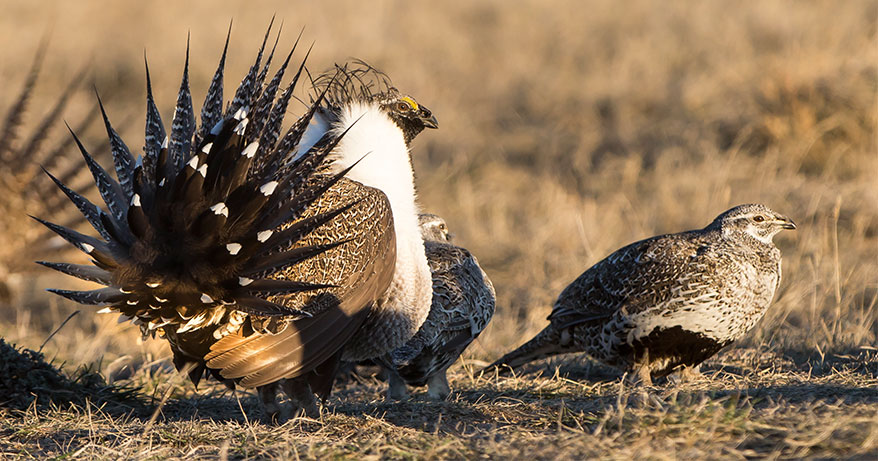We have much more to do and your continued support is needed now more than ever.
Three things to know about the sage-grouse secretarial order (and three we wish we could forget)

Interior secretary Ryan Zinke issued a secretarial order on greater sage-grouse on June 8, 2017. The order initiated a review of management plans that have been in the works for years and were a result of unprecedented collaboration among state, local, and federal stakeholders.
This order was not a surprise, as stakeholders had heard through the grapevine that it was coming, though the details were murky at best. Both Governor Hickenlooper (Colorado) and Governor Mead (Wyoming) signed a letter to Secretary Zinke encouraging him not to derail the work that has already occurred in developing these management plans. Unfortunately, Secretary Zinke did not heed their advice.
Here are three things to know about the secretarial order:
1. It creates an inter-agency review team consisting of the Bureau of Land Management (BLM), US Fish and Wildlife Service (USFWS), and the US Geological Survey.
2. It directs that review team to review sage-grouse management plans state by state to ensure the plans “complement state efforts to conserve the species.”
3. As part of the review close attention will be paid to ensuring sage-grouse management plans do not impede the future of energy development.
Now here are three things we really wish we could forget about this order:
1. It asks the review team to explore “creative approaches” to manage sage-grouse, such as captive breeding and setting population targets state by state. Both approaches are not supported by applicable science, nor experts in the field. Generally, both these approaches are viewed simply as bad ideas.
2. This order basically ignores the work of countless stakeholders in the American West – ranchers, business owners, sportsmen, industry officials, local and state elected officials, outdoor recreation leaders, veterans, conservationists, and their partners in the U.S. government and state governments – who have invested tens of millions of dollars and years of work into creating and implementing locally driven sage-grouse conservation plans.
3. Energy development on public lands, not conservation of sage-grouse, appears to be a priority. In a news briefing and in a statement, Zinke emphasized aligning the conservation plans with Secretarial Order 3349, “Promoting Energy Independence and Economic Growth.” Provisions in the plans might be revised or rescinded based on the potential for energy and other development on public lands. Little matter that the plans do not affect energy development on more than 80 percent of the potential habitat area and about 50 percent of existing energy leases on public lands are currently in production.
This review rightly has many stakeholders who worked on creating these plans on edge. Too many hours have been spent collaborating and developing these plans to change course and ignore the hard work of so many stakeholders.
Looking to Western Governors to Save a Species and an Ecosystem

Across the West, 11 governors and representatives from the states of California, Colorado, Idaho, Montana, Nevada, North Dakota, Oregon, South Dakota, Utah, Washington, and Wyoming have all spent significant time and resources in developing these plans and they will be key to ensuring that these plans remain on track. The plans enabled the U.S. Fish and Wildlife Service to determine that the greater sage-grouse would not have to be added to the endangered species list. Recently we have seen the governors of Colorado and Wyoming publicly ask Secretary Zinke to take a close look at all the work that has been done thus far and to not stray too far from the plans that have been painstakingly developed in a bipartisan manner.
State governments, and especially governors, will be key players over the coming months in ensuring the sage-grouse conservation plans stay on track. They, along with Secretary Zinke, need to hear from everyone who has a stake in conservation of the greater sage-grouse and its habitat. If the plans are derailed and the safeguards they contain aren’t followed, we risk having to take drastic measures that could affect hunting, recreation and other activities we now enjoy on sagebrush lands. We also risk losing an iconic Western landscape and the more than 300 species who live there.
. @SecretaryZinke, keep #sagegrouse plans on track. Western governors, help save the bird, herd & sagebrush lands. https://t.co/OB7HTNwni9
— NWF Sportsmen (@NWFSportsmen) June 19, 2017





















